Lesson 6
A Proof of the Pythagorean Theorem
6.1: Notice and Wonder: A Square and Four Triangles
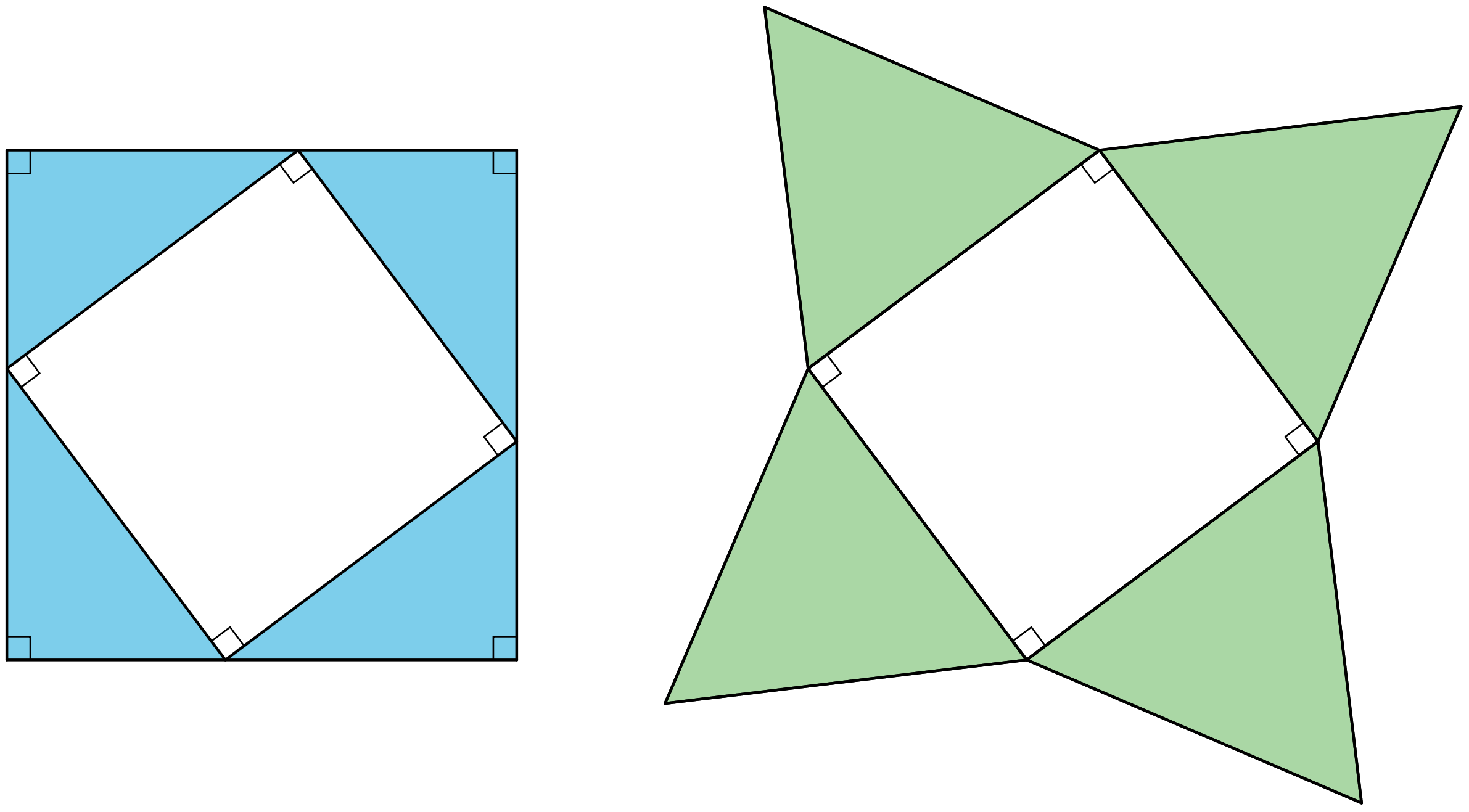
What do you notice? What do you wonder?
6.2: Adding Up Areas
Both figures shown here are squares with a side length of \(a + b\). Notice that the first figure is divided into two squares and two rectangles. The second figure is divided into a square and four right triangles with legs of lengths \(a\) and \(b\). Let’s call the hypotenuse of these triangles \(c\).

- What is the total area of each figure?
- Find the area of each of the 9 smaller regions shown the figures and label them.
- Add up the area of the four regions in Figure F and set this expression equal to the sum of the areas of the five regions in Figure G. If you rewrite this equation using as few terms as possible, what do you have?
Take a 3-4-5 right triangle, add on the squares of the side lengths, and form a hexagon by connecting vertices of the squares as in the image. What is the area of this hexagon?

6.3: Find the Missing Side Lengths
- Find \(c\).
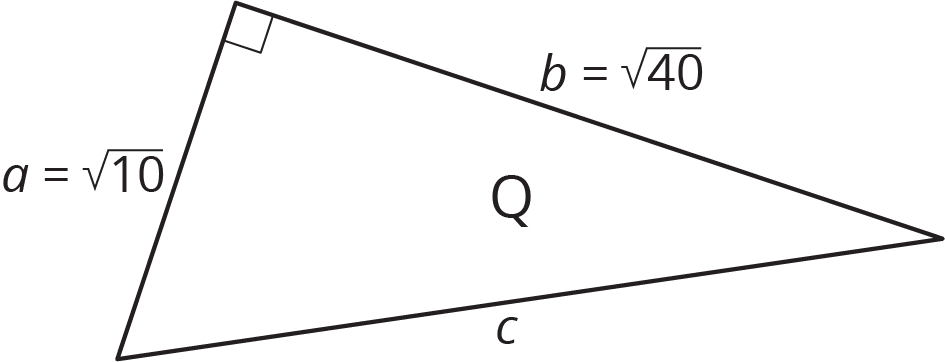
- Find \(b\).
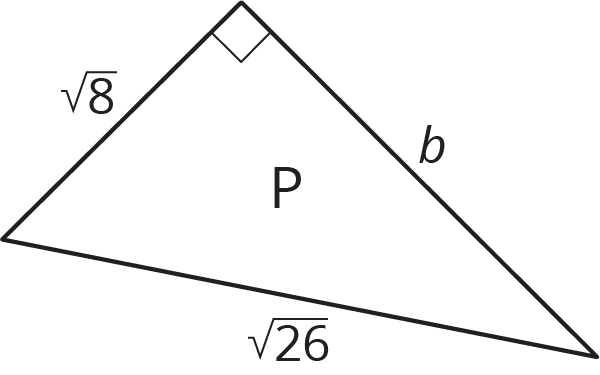
- A right triangle has sides of length 2.4 cm and 6.5 cm. What is the length of the hypotenuse?
- A right triangle has a side of length \(\frac14\) and a hypotenuse of length \(\frac13\). What is the length of the other side?
-
Find the value of \(x\) in the figure.
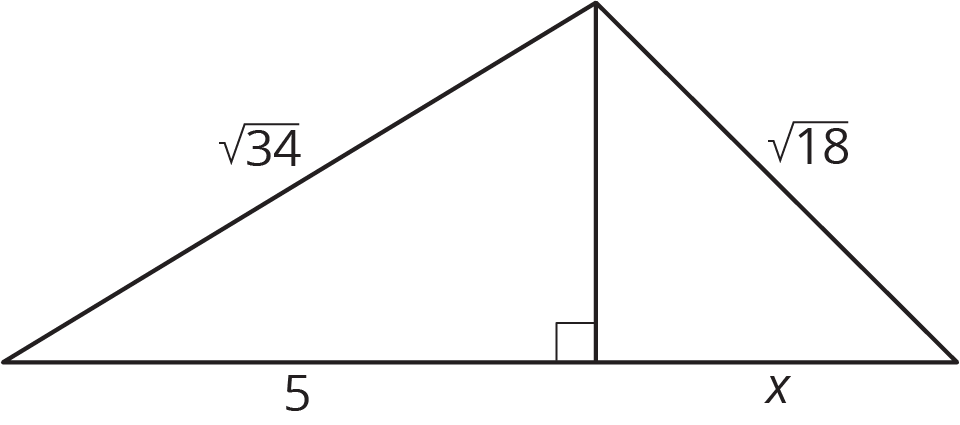
The spiral in the figure is made by starting with a right triangle with both legs measuring one unit each. Then a second right triangle is built with one leg measuring one unit, and the other leg being the hypotenuse of the first triangle. A third right triangle is built on the second triangle’s hypotenuse, again with the other leg measuring one unit, and so on.
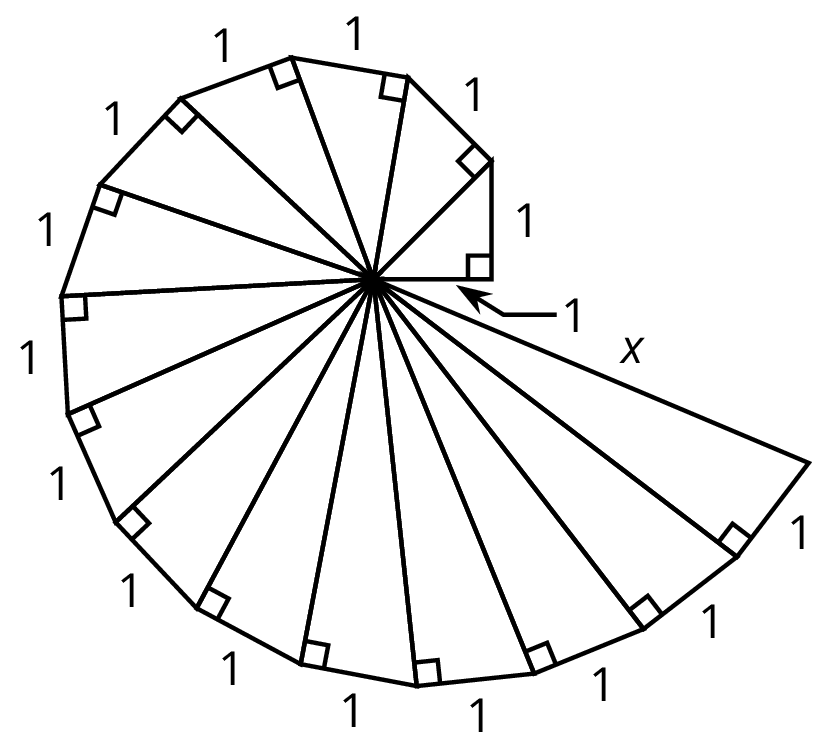
Find the length, \(x\), of the hypotenuse of the last triangle constructed in the figure.
6.4: A Transformational Proof
Use the applets to explore the relationship between areas.
-
Consider Squares \(A\) and \(B\).
-
Check the box to show the pieces.
-
Check the box to turn \(C.\)
-
Arrange the five pieces to fit inside Square \(C\).
-
Check the box to see the right triangle.
-
Arrange the figures so the squares are adjacent to the sides of the triangle.
- If the right triangle has legs \(a\) and \(b\) and hypotenuse \(c\), what have you just demonstrated to be true?
- Try it again with different squares. Estimate the areas of the new Squares, \(A\), \(B\), and \(C\) and explain what you observe.
- Estimate the areas of these new Squares, \(A\), \(B\), and \(C\), and then explain what you observe as you complete the activity.
- What do you think we may be able to conclude?
Summary
The figures shown here can be used to see why the Pythagorean Theorem is true. Both large squares have the same area, but they are broken up in different ways. (Can you see where the triangles in Square G are located in Square F? What does that mean about the smaller squares in F and H?) When the sum of the four areas in Square F are set equal to the sum of the 5 areas in Square G, the result is \(a^2 + b^2 = c^2\), where \(c\) is the hypotenuse of the triangles in Square G and also the side length of the square in the middle. Give it a try!
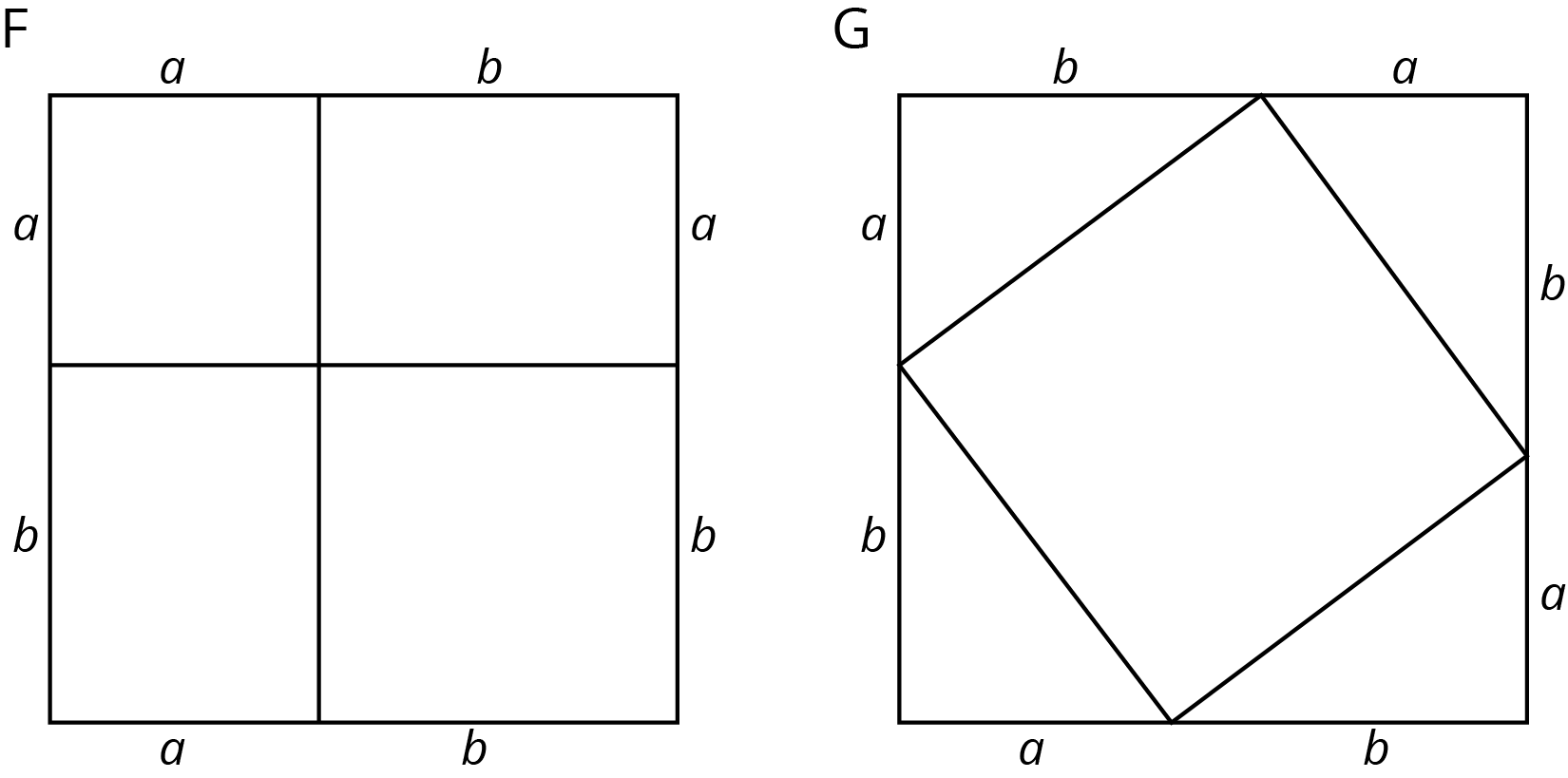
There are many examples where the lengths of two legs of a right triangle are known and can be used to find the length of the hypotenuse with the Pythagorean Theorem. The Pythagorean Theorem can also be used if the length of the hypotenuse and one leg is known, and we want to find the length of the other leg. Here is a right triangle, where one leg has a length of 5 units, the hypotenuse has a length of 10 units, and the length of the other leg is represented by \(g\).
Start with \(a^2+b^2=c^2\), make substitutions, and solve for the unknown value. Remember that \(c\) represents the hypotenuse: the side opposite the right angle. For this triangle, the hypotenuse is 10.
\(\begin{align} a^2+b^2&=c^2 \\ 5^2+g^2&=10^2 \\ g^2&=10^2-5^2 \\ g^2&=100-25 \\ g^2&=75 \\ g&=\sqrt{75} \\ \end{align}\)

Use estimation strategies to know that the length of the other leg is between 8 and 9 units, since 75 is between 64 and 81. A calculator with a square root function gives \(\sqrt{75} \approx 8.66\).
Glossary Entries
- Pythagorean Theorem
The Pythagorean Theorem describes the relationship between the side lengths of right triangles.
The diagram shows a right triangle with squares built on each side. If we add the areas of the two small squares, we get the area of the larger square.
The square of the hypotenuse is equal to the sum of the squares of the legs. This is written as \(a^2+b^2=c^2\).

- hypotenuse
The hypotenuse is the side of a right triangle that is opposite the right angle. It is the longest side of a right triangle.
Here are some right triangles. Each hypotenuse is labeled.

- legs
The legs of a right triangle are the sides that make the right angle.
Here are some right triangles. Each leg is labeled.
